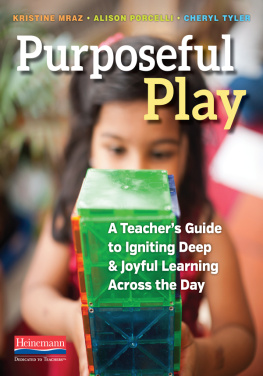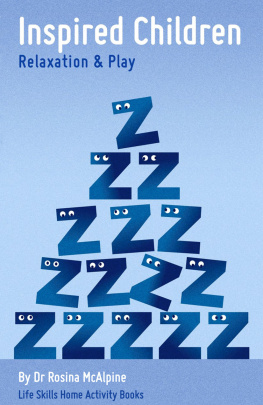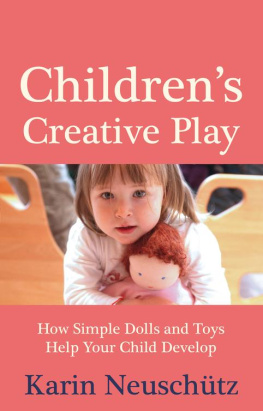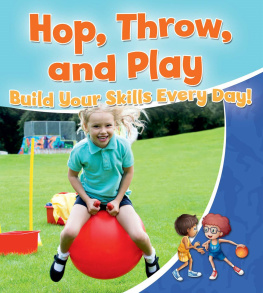Play

The Pathway from Theory to Practice
Sandra Heidemann and Deborah Hewitt

Published by Redleaf Press
10 Yorkton Court
St. Paul, MN 55117
www.redleafpress.org
1992, 2010 by Sandra Heidemann and Deborah Hewitt
All rights reserved. Unless otherwise noted on a specific page, no portion of this publication may be reproduced or transmitted in any form or by any means, electronic or mechanical, including photocopying, recording, or capturing on any information storage and retrieval system, without permission in writing from the publisher, except by a reviewer, who may quote brief passages in a critical article or review to be printed in a magazine or newspaper, or electronically transmitted on radio, television, or the Internet.
First edition published 1992. Second edition 2010.
Cover design by Jim Handrigan
Cover photographs by Steve Wewerka (left) and Greg Thompson (right)
Interior photographs courtesy of Steve Wewerka, Jeff A. Johnson, who took the photos on
Interior typeset in Futura, Adobe Garamond Pro, and Marker Felt Thin and designed by Michelle L. N. Cook
Library of Congress Cataloging-in-Publication Data
Heidemann, Sandra, 1946-
Play : the pathway from theory to practice / Sandra Heidemann and Deborah Hewitt. Rev. ed.
p. cm.
Rev. ed. of: Pathways to play : Redleaf Press, c1992.
Includes bibliographical references.
ISBN 978-1-60554-171-6 (e-book)
1. Play. 2. Education, Preschool. 3. Child development. I. Hewitt, Debbie, 1958- II. Heidemann, Sandra, 1946- Pathways to play. III. Title.
LB1137.H38 2009
372.21dc22 2008039424
Contents
THIS BOOK BEGAN AS a simple idea. We wanted to design a that would help caregivers observe childrens play skills. Little did we know that this simple idea would take so much work and time and yield such worthwhile results.
The need for a checklist was apparent to both of us as teachers and child care consultants. Often we would sit with a beleaguered caregiver and hear stories of a child who was aggressive, defiant, volatile, and anxious. Inevitably, the caregiver would also state that the child did not play with other children. We could help the caregiver reduce the aggression with a behavior plan, but this did not help the child participate more in play. We felt a checklist could help a caregiver pinpoint the play skills that needed work and plan goals for improving those play skills.
We began a long search for the right instrument to give caregivers. We adapted the components from the play inventory developed by Sara Smilansky (1968) to help caregivers understand the complex variables of were lengthy and assessed the developmental age of the childs play. We wanted an instrument that was relatively short and that caregivers could easily use in their settings. This instrument didnt need to assess the developmental level of play. It was needed more as a tool to observe play and to plan appropriate goals. This meant it had to be short, pertinent, and easy to understand.
We decided to develop a checklist that would address both sociodramatic play (play that involves make-believe, cooperative interaction, and role-playing) skills and social skills (the ability to cooperatively interact with others, ). The process of designing the checklist proved to be longer and more laborious than originally planned. There were countless revisions as colleagues and caregivers gave us valuable feedback.
After finishing the Play Checklist, we presented it to many caregivers in workshops and individual consultations. Invariably, feedback has been positive and enthusiastic. To further help caregivers in their planning, we added suggestions and activities for children who are learning play skills. The original book based on this previous work was published in 1992. Caregivers reported that the information helped them plan for children who were having difficulty with . It also helped them understand the complexity of play and appreciate its importance.
Since 1992, more research about play and childrens development, particularly early literacy and brain development, has spurred new discussions in the field of early childhood. In that time we have observed more in classrooms. We thought that the additions of these topics could only strengthen our book. We decided to build upon the helpful information in the last book and incorporate these new issues into this new edition. We also made changes in the Play Checklist to reflect current thinking.
We hope you will find the additions, the Play Checklist, and our suggestions for planning and activities useful and interesting. We also wish for you many playful times while you care for those who teach us the most about play: the children.
A SPECIAL THANKS TO Terry Halfin for her permission to use her case study as an example. We value the thoughtful insights offered by our readers, Diane Lerberg, Jeanne Dickhausen, Mary Hunt, and Nedra Robinson, that helped strengthen the manuscript. We appreciate the help that Marcia Zappa offered in researching topics and formatting pages. We are grateful for the trust placed in us by those at Redleaf Press as they recognize the place this book holds in early childhood literature. Our thanks to Jeanne Engelmann, Kyra Ostendorf, and Laura Maki for their careful editing and encouragement as we developed drafts.
We want to thank our families who put up with our preoccupation with the book. At times the project has been all-consuming, and our husbands, Jeff and Jim, and children, Marcia, Reid, Carrie, and Dan, have stepped in to pick up the pieces.
Finally, we want to acknowledge the many learning opportunities our work with children and early childhood educators has provided. Our work in classrooms has taught us a great deal about the importance of play and the amazing resiliency of children. Early childhood educators continually teach us about the passion they bring to their work and their desire to help children be successful.
NICOLE HAS SEVENTEEN STUDENTS in her early childhood classroom. One of them is Manuel. Manuel is four years and nine months old. He and his family recently moved from Mexico to the United States. He knows a little English and is able to join English-speaking children as they play. He is a happy child with lots of enthusiasm and friends. Occasionally, he comes to the teacher with tears brimming in his eyes because he is unable to get the children to understand one of his play ideas. When Manuel and his parents came to fall parent night, Nicole found out that Manuels parents speak very little English. Through another Spanish-speaking family, she learned that Manuel does much of the interpreting for his family during important communications with the apartment manager and the doctor.
Another of Nicoles students is Christopher. He is three and a half years old. He often comes to school looking dirty, wearing clothes that are either so big he could trip or so small his skin is exposed during the cold winter months. His family lives in a trailer home and is doing the best they can to make ends meet. Christopher talks about how his neighbors get into fights and then the police come. He is enamored with superhero television shows, and his backpack is full of plastic action figures. Christopher often gets into arguments with other children, and his first reaction is to raise his fist and yell. Other children are starting to avoid him.
Brooke is a four-year-old in Nicoles room. Brooke has trouble sitting for story time. She needs reminders to stay in her chair to finish snack or eat her lunch. During , Brooke rarely engages in lengthy play. Instead, Nicole noticed that Brooke runs








